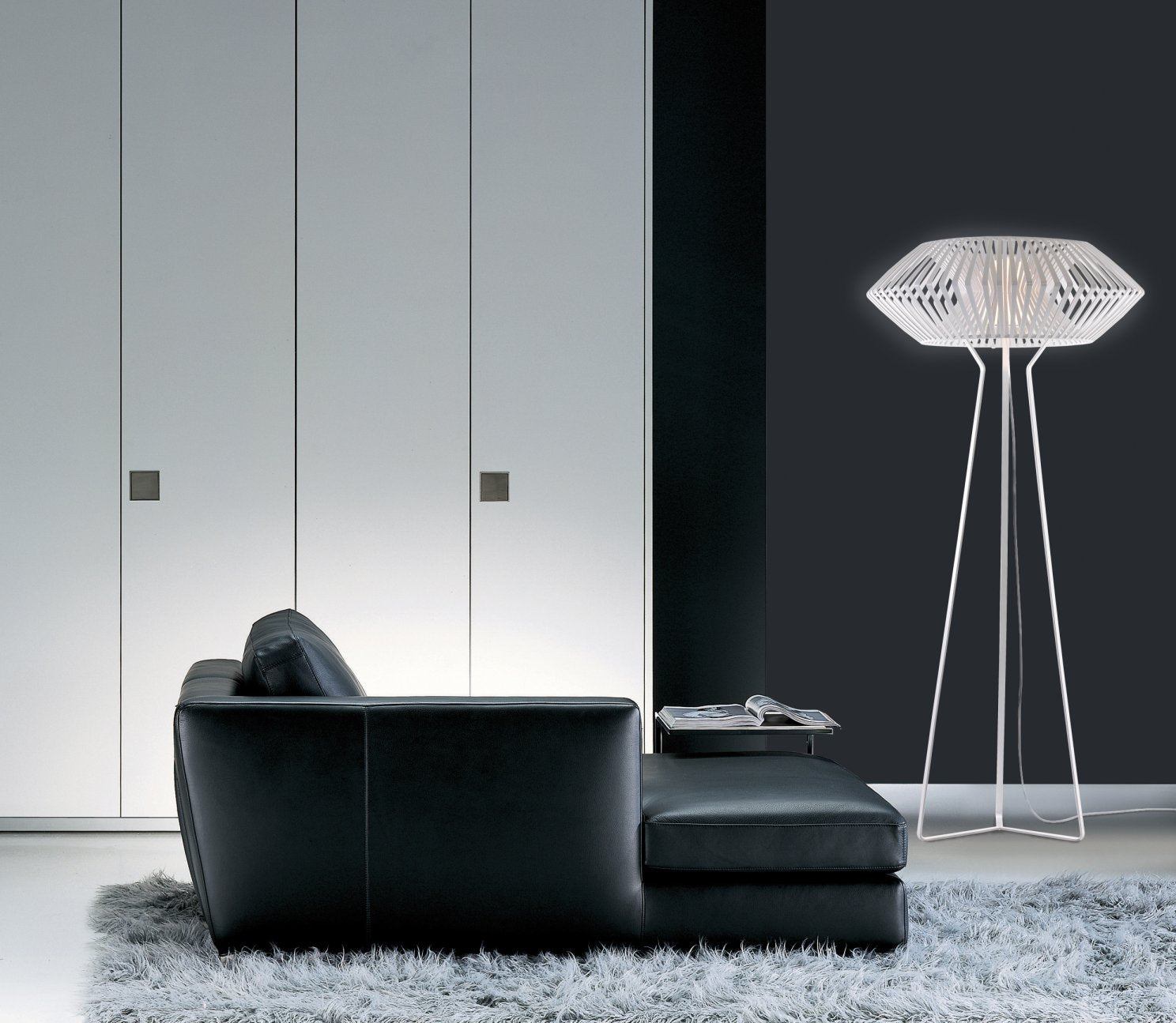The living room is often the heart of a home, where people gather to relax, entertain, and spend time with loved ones. Therefore, it is important that this room has a pleasant atmosphere to enjoy with your loved ones or to relax alone. The living room is one of the most multifunctional rooms in the house - in it some work, eat lunch, watch movies, dance, exercise and receive guests.
Naturally, a question arises: how should one separate all these activities from each other? The answer is simple with practical lighting design!

Everyday living room lighting - for exercising, reading books or having lunch
To ensure that the atmosphere in the living room is suitable for everyday activities, it needs proper lighting - strong and bright ceiling lamps and a table lamp. A floor lamp will come in handy if you choose to read books on the sofa or armchair.
The best practice is to choose 2 separate ceiling lights - one we already mentioned, for everyday use. The other lighting is the living room pendant, which is likely to be more unique in its design, attention-grabbing and calmer, creating a more cozy atmosphere for open conversations.
Living room table lamps for work
If you don't have a place for a table in the living room to work at - feel free to go to the next paragraph.
Choose a simple and unobtrusive table lamp that is effective for work. Simple in its design because the living room is usually the largest room in the house, therefore it already has many objects - sofa, paintings, carpet, interior decorations. However, there is one but - if you usually carry the table lamp from the work table to the living room when you invite guests over, then it will be more difficult - you have to choose both a beautiful lamp and a practical one to fulfill both duties.
If you are not sure about your living room table lamp, contact our team of professionals - we will help you find the right solution that meets your needs.

Now that the practical lighting has been reviewed, now let's move on to the most pleasant - Design lamps for the living room
Living Room Chandeliers
Here you can express yourself in lamp materials and colors without thinking about practicality. Since the living room is usually the largest room in the house, it also deserves the largest lamp in the house.
Floor lamps for the living room
The position of floor lamp is very important, because while it is one of the most beautiful interior details in the whole space, its position can be a trump card and can spoil the relaxation.
The position of the ceiling lamp is important so that it does not get caught when moving around the room and that the lamp fabric and the bulb are not in a place where a person could hit his head or knock the lamp over.
If you follow these two principles, this lamp will become your best friend and the most frequently used light - trust us.

Living room table lamps
The position of these lamps is also important, but less so than floor lamps. The lamp should be placed on a surface that is close to the guests, but not used too often, reducing the possibility of the lamp being a nuisance.
This lamp also has no limits - you have to choose the lamp fabric, color, material and style that appeals the most, because this lamp will also be a great decorative element that will create an atmosphere and attract attention.

To summarize
The living room is multifunctional, so you need different lighting to meet different needs - movie night, yoga or reading books;
The living room is a large room, it should be used and large lamps should be placed in it;
This is a room where you can express yourself with designer lights;
Although this room is meant for relaxation, practical lights are also useful for daytime activities.
If you have any questions about your living room lighting, contact us - info@luminesy.com

